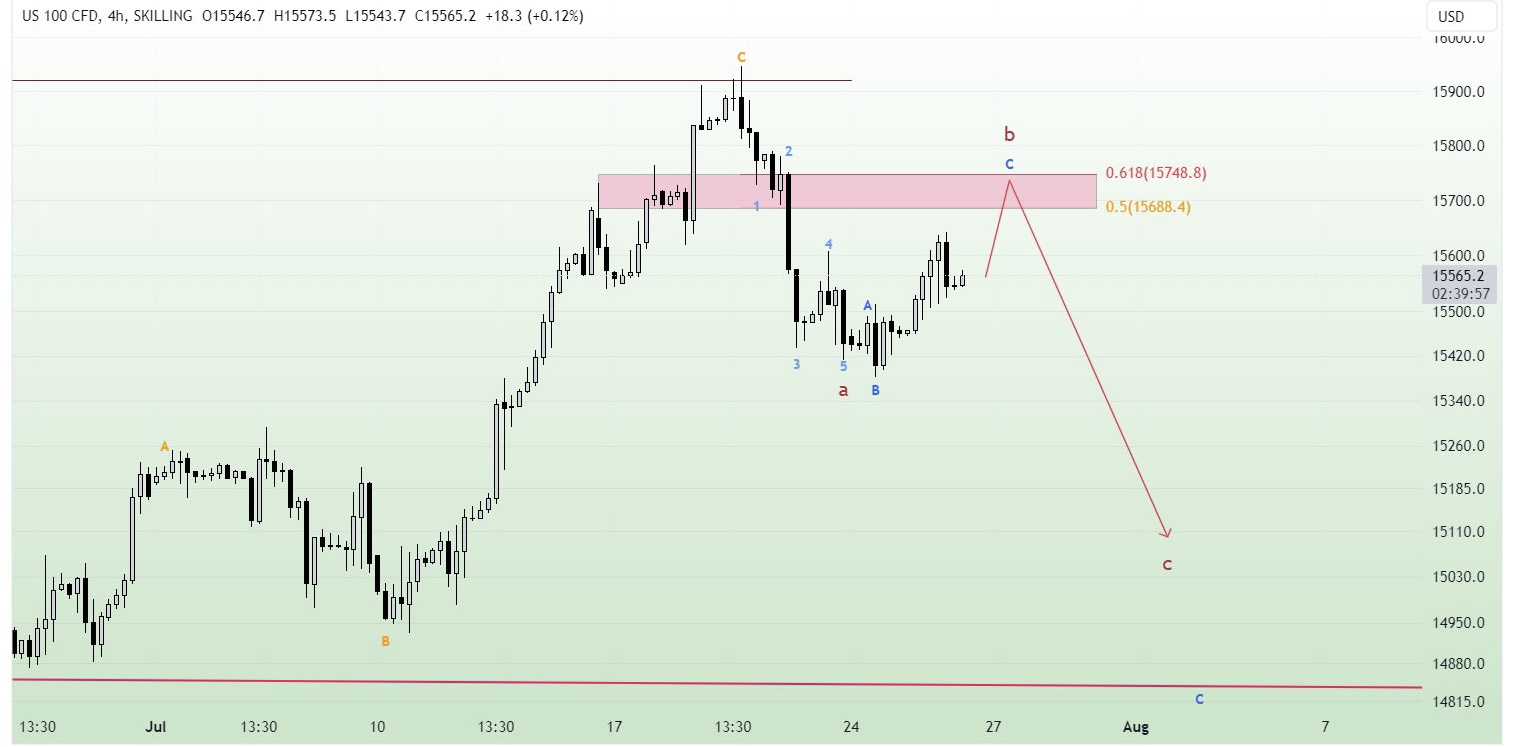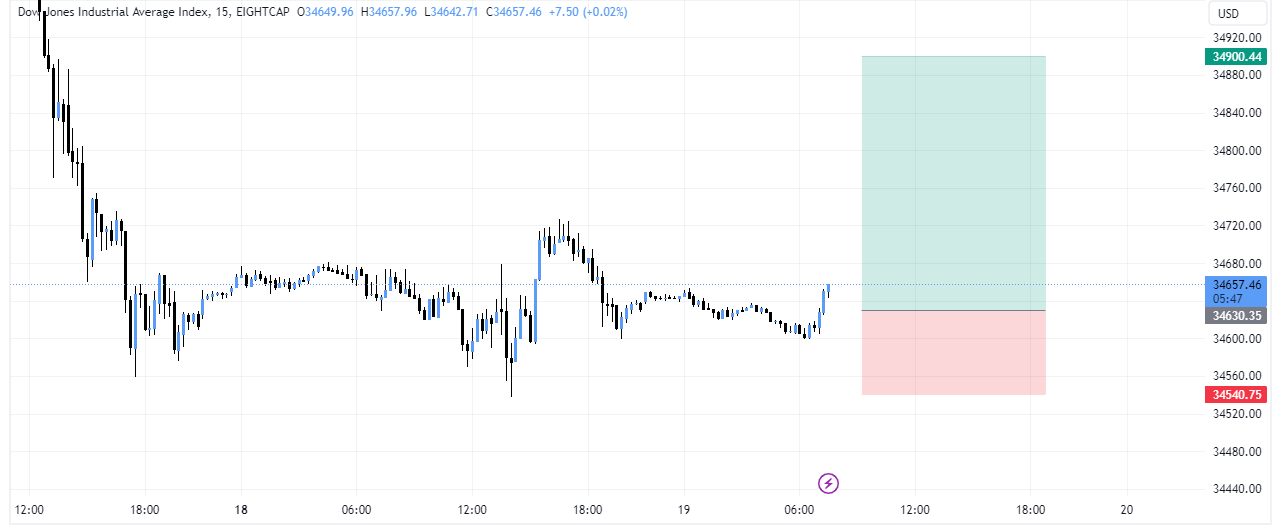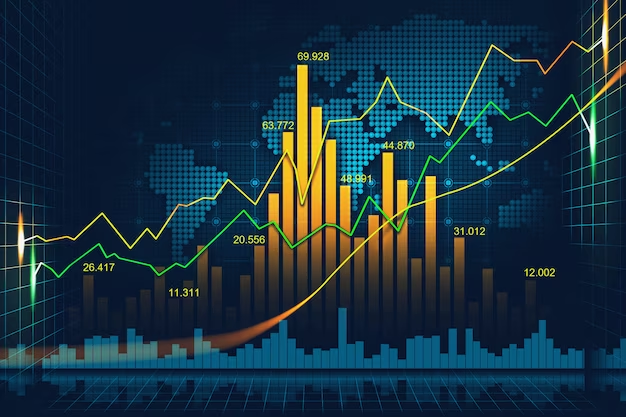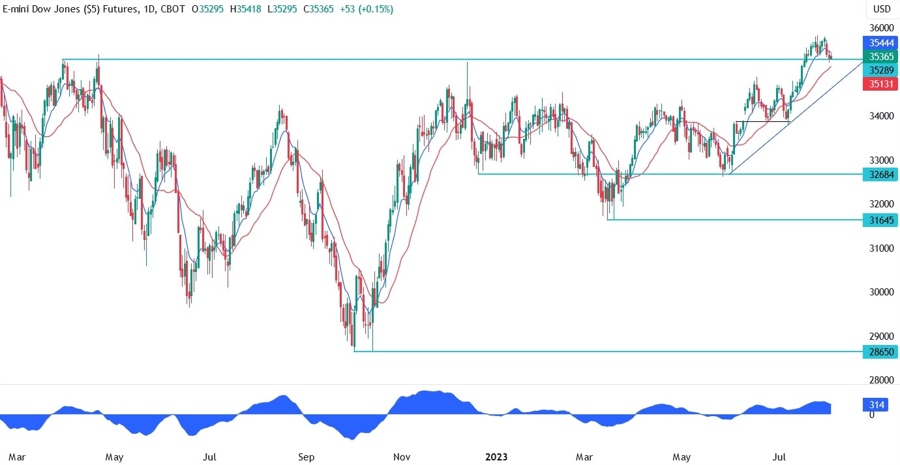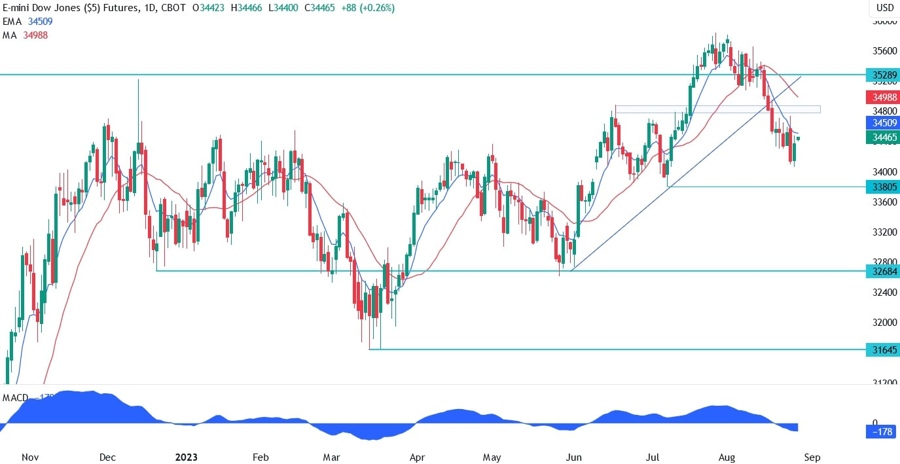IBOVESPA-The Bovespa Index-Brazil Stock Exchange Index
Parent Index
NA
Indices informations
Listed Exchanges
| Brazil Stock Exchange |
Related Instuments
| N/A |
Sector Represented
| Chemicals |
| Health Care |
| Real Estate |
| Industries |
| Energy |
Indices
- BSE SENSEX
- CAC 40
- CBOE NASDAQ-100 Volatility Index (VXN)
- CBOE Volatility Index (VIX)
- China50-FTSE China A50 Index
- DAX
- DAX PERFORMANCE-INDEX-GDAXI
- DE40-Germany 40 Index DAX
- Dollar Index USDX-DXY-DX-Dixie
- Dow Jones Industrial Average-DJIA
- EURO STOXX 50 SX5E
- FTSE 100 Index-UK100 Index
- Germany 30
- Hang Seng Index
- IBEX 35-Spain 35
- NASDAQ Composite
- NASDAQ-100
- Nikkei 225
- Russell 2000 Index
- S&P/ASX 200
- Singapore Blue Chip Index-STI
- Swiss Market Index (SMI) Switzerland Blue Chip Index
- TecDax Price Index
- TECHDE30-Germany Tech 30 Index
- US Tech 100 Index UT100
- US2000-US Small Cap 2000 Index
- US30-US Wall Street 30 Index
- US30M- US Wall Street 30 Index M
- US500-S&P 500 (GSPC, INX, SPX)
- US500-US SPX 500 Index
- US500M-S&P 500 Mini
- All Ordinaries
- Amsterdam Exchange Index AEX index
- ATX-Austrian Traded Index (ATX)
- BEL 20
- BELEX15
- BIRS
- BIST-Borsa Istanbul
- CROBEX
- EGX 30 Index Egypts Leading Stock Market Index
- FTSE All-Share Index
- FTSE Bursa Malaysia Index-KLCI Index
- FTSE MIB-FTSE MIB 40
- Índice Bursátil Caracas (IBC)
- Índice Bursátil de Capitalización-The General Index
- Indice de Precios y Cotizaciones
- KOSPI
- KSE 100 Index
- MDAX
- MERVAL
- MICEX-The MOEX Russia Index
- OBX Index
- OMX Copenhagen 20 (OMXC20)
- OMX Helsinki 25 (OMXH25)
- OMX Stockholm 30 (OMXS30)
- PSE Index (PSEi)
- PSI20-PSI-20
- S&P/NZX 50 Index
- S&P/TSX 60
- S&P/TSX Composite Index
- S&P/TSX Venture Composite Index
- SOFIX
- SSE Composite Index (上证综指) Shanghai Composite Index
- Straits Times Index (STI)
- SZSE Component Index (深证成指)
- TA-125 Tel Aviv 125 Index
- Taiwan Capitalization Weighted Stock Index (TAIEX)
- The Indice de Precio Selectivo de Acciones- IPC
- CBOE NASDAQ-100 BuyWrite Index (BXN)
- Hang Seng China H-Financials Index
- IBOVESPA-The Bovespa Index-Brazil Stock Exchange Index
- NASDAQ Financial-100
- SDAX – Small cap
- TecDAX
- aaa
- Amex Gold BUGS Index
- Amex Oil Index
- AScX index – Small cap
- ASE Weighted Index
- Athex 20
- Barrons 400 Index
- BELEXline
- BET-10
- BSE DCI
- BSE FCI
- BUMIX – Mid cap
- BUX – Large cap
- CA60-Canada 60 Index
- CAC All Share
- CAC All-Tradable
- CAC Large 60
- CAC Mid & Small
- CAC Mid 60
- CAC Next 20
- CAC Small
- Capital Markets Index
- CASPI
- CBOE DJIA BuyWrite Index (BXD)
- CBOE S&P 500 BuyWrite Index (BXM)
- CBV Index
- CBV Real Estate Index
- CECEEUR
- Central European Blue Chip Index – Regional large cap
- ChinaH-Hong Kong China H-shares Index
- COLCAP
- Colombo Stock Exchange Sector indices (CSE Sectors)
- CROBIS
- CSC X
- CSE 30
- CSE50
- CSI
- CSI 100 Index (中证100指数)
- CSI 300 Index (沪深300指数)
- Dow Jones Global Titans 50
- Dow Jones Transportation Average
- Dow Jones Utility Average
- DSE
- DSEX
- DSM200
- EGX 100 Index
- EGX 50 Index
- EGX 70 Index
- ERS10
- FIRS
- FT 30 Index
- FTSE 350 Index
- FTSE AIM All-Share Index
- FTSE AIM UK 50 Index
- FTSE All-World index series
- FTSE Fledgling Index
- FTSE Italia Mid Cap
- FTSE MID 250 Index
- FTSE SmallCap Index
- FTSE techMark Index
- FTSE/Athex Large Cap
- FTSE/JSE All Share Index
- FTSE/JSE Top 40 Index
- FTSEurofirst 300 Index
- FTSEurofirst Euro Supersector Indices
- GSE All-Share Index
- Hang Seng China Enterprises Index
- Hang Seng China-Affiliated Corporations Index
- HK50
- IDX Composite
- IGBC
- IPSA
- ISEQ 20-The Ireland Overall Stock Exchange Index-ISEQ20
- IT40-Italy 40 Index
- Jakarta Islamic Index (JII)
- Jamaica Stock Exchange (JSE)
- KASE
- KMI 30 Index
- KOSDAQ
- KSE All Share Index
- KSE-30 Index
- Kuala Lumpur Composite Index
- LASI
- LQ-45
- LuxX Index – Luxembourg Stock Exchange
- MADEX index
- Madrid Stock Exchange General Index
- MASI index
- MESDAQ
- MIDDE50-Germany Mid 50 Index
- MIDDE60-Germany Mid 60 Index
- Milanka Price Index (MPI)
- MSCI EAFE
- MSCI GCC
- MSCI Hong Kong Index
- MSCI World
- MSM-30
- NEPSE Index – Nepal Stock Exchange
- NETH25
- NIFTY 100 LOW VOLATILITY 30
- NIFTY 200
- NIFTY ALPHA 50
- NIFTY BANK
- NIFTY CPSE
- NIFTY ENERGY
- NIFTY FINANCE
- NIFTY FMCG
- NIFTY INDIA CONSUMPTION
- NIFTY INFRA
- NIFTY IT
- NIFTY MEDIA
- NIFTY METAL
- NIFTY MIDCAP 100
- NIFTY MIDCAP 50
- NIFTY MIDCAP LIQUID 15
- NIFTY MIDSMALLCAP 400
- NIFTY MNC
- NIFTY Next 50
- NIFTY PHARMA
- NIFTY PSE
- NIFTY PSU BANK
- NIFTY PVT BANK
- NIFTY REALTY
- NIFTY SERV SECTOR
- NIFTY SMALLCAP 100
- NIFTY SMALLCAP 250
- NIFTY SMALLCAP 50
- NIFTY100 EQUAL WEIGHT
- NIFTY100 LIQUID 15
- NIFTY200 QUALITY 30
- NIFTY50 EQUAL WEIGHT
- Nor25-Norway 25 Index
- NSE 30 Index
- NSE All Share Index
- NSE NIFTY 50
- NYSC Arca Major Market Index
- NYSE American Composite Index
- OMX Iceland 15 (discontinued)
- OMX Iceland 6
- OMX Stockholm PI (OMXSPI)
- OMX Vilnius (OMXV)
- OTCM QX ADR 30 Index
- Palisades Water Index (ZWI)
- PFTS index
- Philadelphia Gold and Silver Index
- PHLX Semiconductor Sector
- PSE All Shares Index
- PSE Financials Index
- PSE Mining and Oil Index
- PSI/GERAL
- PX Index
- RTS Index (RTSI)
- Russell 1000
- Russell 2500
- Russell 3000
- Russell MidCap
- Russell Small Cap Completeness
- S&P 100
- S&P 1500
- S&P Asia 50
- S&P BSE 500
- S&P Europe 350
- S&P Global 100
- S&P Global 1200
- S&P Latin America 40
- S&P MidCap 400
- S&P MidCap 400/BARRA Growth
- S&P MidCap 400/BARRA Value
- S&P SmallCap 600
- S&P SmallCap 600/BARRA Growth
- S&P SmallCap 600/BARRA Value
- S&P Vietnam 10 Index
- S&P/ASX 20
- S&P/ASX 300
- S&P/ASX 50
- SA40-South Africa 40 Index
- SBF 120
- SE30-Sweden 30 Index
- SET Index
- SET100 Index
- SET50 Index
- Slovak Share Index
- SMI Expanded
- SMI MID
- SPBLPGPT
- SSE 180 Index (上证180指数)
- SSE 50 Index (上证50指数)
- STOXX Europe 600
- SWI20-Switzerland 20 Index
- Swiss Leader Index (SLI)
- Swiss Performance Index (SPI)
- SZSE 100 Index (深证100指数)
- SZSE 200 Index (深证200指数)
- SZSE 300 Index (深证300指数)
- TA-35 Index
- TA-90
- Tadawul
- TEDPIX
- TEPIX
- The Global Dow
- The GSE Composite Index.
- THETAUSD Theta Network Token vs US Dollar
- TOPIX
- Trinidad and Tobago Stock Exchange (TTSE)
- UBS 100 Index
- Value Line Composite Index
- VN Index
- WIG-Warszawski Indeks Giełdowy
- WIG30
- Wilshire 4500
- Wilshire 5000
- Zimbabwe Industrial Index
- Zimbabwe Mining Index
The IBOVESPA Index, also known as the Bovespa Index, is the main stock market index of the São Paulo Stock Exchange (B3) in Brazil. It represents the performance of the most actively traded stocks on the exchange and is widely regarded as the benchmark index for the Brazilian stock market.
History
The IBOVESPA Index was created on January 2, 1968, with a starting value of 100 points. Over the years, it has become an important indicator of the Brazilian economy and investor sentiment towards the country’s financial markets. The index is updated every 30 seconds during trading hours, reflecting the real-time changes in stock prices.
Composition
The IBOVESPA Index is composed of a selected basket of stocks from different sectors of the Brazilian economy. The stocks included in the index must meet certain criteria, such as liquidity and market capitalization. As of [insert date], the index consists of approximately [insert number] stocks.
Some of the largest and most influential companies listed on the IBOVESPA Index include [insert examples]. These companies represent various industries, including finance, energy, telecommunications, and consumer goods.
Importance
The IBOVESPA Index plays a crucial role in providing investors with insights into the overall performance of the Brazilian stock market. It serves as a barometer of investor confidence and can help in evaluating the general health of the Brazilian economy.
Many financial instruments, such as exchange-traded funds (ETFs), futures contracts, and options, are based on the IBOVESPA Index. These derivatives provide investors with opportunities to speculate on or hedge against market movements.
Impact on Investors
Investors closely monitor the IBOVESPA Index to make informed decisions about their investment portfolios. Changes in the index can indicate trends, market sentiment, and potential opportunities.
For example, if the IBOVESPA Index shows a consistent upward trend, it may suggest a bullish market environment, encouraging investors to consider buying stocks or other related instruments. Conversely, a declining index could imply a bearish market sentiment, prompting investors to be cautious or adopt a defensive investment strategy.
Furthermore, the IBOVESPA Index is often used as a benchmark for measuring the performance of mutual funds and other investment portfolios. Fund managers compare their returns against the index to assess their fund’s performance relative to the broader market.
Conclusion
The IBOVESPA Index is an essential tool for investors interested in the Brazilian stock market. It provides valuable insights into market trends, acts as a benchmark for various financial products, and helps investors gauge the overall performance of the Brazilian economy. As with any investment, conducting thorough research and seeking professional advice is crucial before making any financial decisions based on the IBOVESPA Index.
IBOVESPA Index: A Comprehensive Guide to Understanding How IBOVESPA Works
The IBOVESPA Index, also known as the Bovespa Index or simply IBOV, is the main stock market index in Brazil. It represents the performance of the largest and most liquid companies traded on the São Paulo Stock Exchange (B3).
Created in 1968, the IBOVESPA has become a crucial indicator for investors and financial analysts, providing insights into Brazil’s economy and its overall market trends. This article aims to provide a comprehensive understanding of how the IBOVESPA works and its significance in the Brazilian financial landscape.
Components and Weighting Methodology
The IBOVESPA consists of the most actively traded stocks across various sectors in Brazil. The selection process considers criteria such as liquidity and market capitalization, ensuring that the index represents a significant portion of the total market value of shares traded on the B3.
The weighting methodology used by the IBOVESPA is based on the free-float market capitalization of each company. Free-float shares refer to the total number of outstanding shares available for trading, excluding shares held by controlling shareholders, strategic partners, or government entities. This approach ensures that changes in the index primarily reflect market developments rather than changes in specific shareholdings.
The index undergoes periodic reviews every four months to ensure it remains representative and aligns with the market’s evolution. Companies that no longer meet the eligibility criteria may be excluded, while new firms meeting the requirements can join the index.
Calculating the IBOVESPA Index
The IBOVESPA index is calculated using a weighted average methodology, which takes into account the price and quantity of shares traded. The formula to calculate the index value is as follows:
IBOVESPA Index = (Sum of [Market Price x Quantity]) / Base Value
The base value represents the starting point for the index and is set at 100 points on January 2, 1968. As the market evolves, the index value changes accordingly. For instance, if the IBOVESPA stands at 120, it means that the index has increased by 20% since its base value.
Significance and Impact
The IBOVESPA serves as a benchmark for evaluating the performance and volatility of the Brazilian stock market. Investors and analysts use it to assess the overall health of the economy and make informed investment decisions.
Additionally, the IBOVESPA has become an essential tool for derivative products such as futures contracts and exchange-traded funds (ETFs). These instruments allow investors to gain exposure to the entire index or specific sectors without having to buy individual stocks.
As Brazil’s economy expands or contracts, the IBOVESPA tends to reflect those changes. Positive economic indicators, political stability, and favorable market conditions can lead to an uptrend in the index, attracting more investments. Conversely, negative developments can result in a decline.
Risk Factors
Investing in the IBOVESPA or any stock market index carries inherent risks. Some factors that can impact the IBOVESPA include economic downturns, political instability, currency fluctuations, and global market trends. It’s essential for investors to conduct thorough research, diversify their portfolios, and consider their risk tolerance before investing in the IBOVESPA.
Conclusion
The IBOVESPA Index plays a crucial role in Brazil’s financial landscape, acting as a barometer of the country’s economic health and overall market performance. Its diverse components, weighting methodology, and frequent reviews ensure that it remains a relevant and reliable benchmark for investors and analysts alike.
By tracking the IBOVESPA, market participants can gain insights into Brazil’s stock market trends, make informed investment decisions, and manage their risk exposure effectively.
Fundamental Summary
- Coming soon!!

